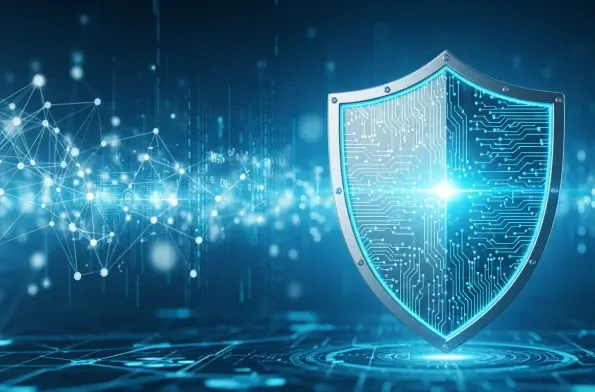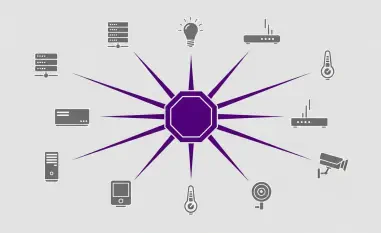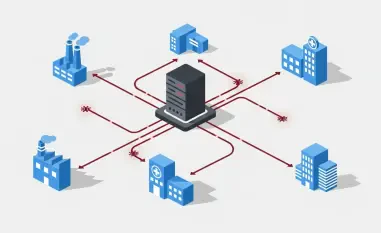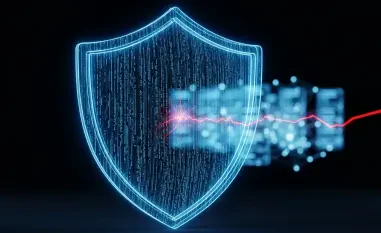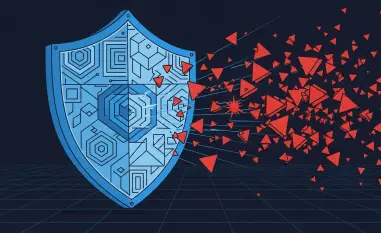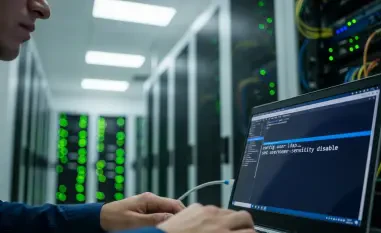Imagine a digital battlefield where cyber threats evolve daily, and the tools designed to defend against them are put to the ultimate test, with one program standing as the gold standard for assessing endpoint detection and response (EDR) solutions: the MITRE ATT&CK Evaluations. This initiative, run by the MITRE Corporation, has been pivotal in shaping how the cybersecurity industry measures the effectiveness of security products against real-world adversary tactics. Yet, as the landscape shifts with increasing complexity and changing vendor priorities, the program finds itself at a crossroads. This review dives deep into the framework’s core features, performance metrics, and the recent challenges it faces, offering a comprehensive look at its role in today’s threat environment.
Understanding the Framework and Its Testing Program
The MITRE ATT&CK framework serves as a detailed catalog of cyber adversary tactics, techniques, and procedures (TTPs), providing a structured way to understand and combat threats. Developed by a US-based non-profit, it has become a cornerstone for cybersecurity professionals aiming to map out and mitigate attack patterns. The Evaluations program, launched several years ago, takes this a step further by testing EDR solutions through simulated attacks, mimicking the behaviors of sophisticated threat actors to gauge detection and response capabilities.
This testing initiative has earned a reputation as a trusted third-party benchmark, often dubbed the pinnacle of cybersecurity validation. Its significance lies in offering an unbiased assessment that vendors and organizations rely on to make informed decisions about security investments. By replicating real-world scenarios, the program provides a window into how well solutions can stand up to persistent and evolving threats.
Beyond just a technical exercise, the Evaluations influence market perceptions and vendor credibility. Organizations across sectors like finance and government look to these results to guide their procurement strategies, making the program a critical player in shaping industry standards. However, as the digital threat landscape grows more intricate, questions arise about whether this benchmark can keep pace with modern challenges.
Diving Into the Evaluation Mechanics
Framework-Driven Testing Approach
At the heart of the Evaluations is the ATT&CK framework, which breaks down cyber threats into actionable categories of TTPs. This structured approach allows for a granular analysis of how adversaries operate, from initial access to data exfiltration. During testing, EDR solutions are subjected to carefully crafted simulations that mirror these documented behaviors, assessing their ability to detect, alert, and respond effectively.
The strength of this methodology is its grounding in real-world attack patterns, ensuring that tested products are evaluated against threats they are likely to encounter. Unlike generic stress tests, this TTP-based evaluation offers insights into specific weaknesses and strengths, providing vendors with targeted feedback for improvement. It pushes the industry to prioritize practical defense over theoretical capabilities.
However, the reliance on predefined TTPs can sometimes limit the scope to known threats, potentially overlooking novel or zero-day exploits. As attackers continuously innovate, the framework must adapt to capture emerging techniques, a challenge that the program strives to address through regular updates and scenario expansions.
Scenario Design and Increasing Sophistication
The test scenarios crafted for the Evaluations are meticulously designed to reflect current and emerging threat landscapes. For instance, recent tests have focused on tactics used by North Korean hackers and ransomware groups like CL0P and LockBit, while current iterations explore cloud exploitation and cyber-espionage operations tied to sophisticated state-aligned actors. This deliberate selection ensures relevance to pressing global cybersecurity concerns.
Each year, the complexity of these scenarios escalates, aiming to drive innovation within the industry. By introducing new domains such as cloud security, the program challenges vendors to extend their capabilities beyond traditional endpoint protection. This push, while commendable, places significant demands on participants, requiring substantial resources to prepare for and address the nuanced attack simulations.
Such rigor, though beneficial for advancing technology, can strain smaller vendors or those not yet equipped for newer domains. The balance between pushing boundaries and maintaining accessibility remains a delicate one, as overly complex tests risk alienating participants who might otherwise contribute valuable perspectives to the ecosystem.
Industry Shifts and Notable Vendor Exits
A significant development shaking the foundation of the Evaluations is the decision by major vendors—Microsoft, SentinelOne, and Palo Alto Networks—to step away from the current testing cycle. These industry leaders have cited a focus on internal product innovation and customer needs as primary reasons for their withdrawal, signaling a shift in priorities away from public benchmarking.
Speculation within the industry points to additional factors, including the resource-intensive nature of participation and discomfort with the program’s evolving focus on areas like cloud environments, which may not align with every vendor’s current strengths. This exit raises critical questions about the perceived value of the Evaluations and whether they remain the definitive measure of EDR effectiveness.
The absence of these key players could impact the program’s standing as a comprehensive industry benchmark. While other vendors continue to participate, the loss of such prominent names might influence customer trust and the overall narrative around the Evaluations’ relevance in a rapidly changing security landscape.
Practical Implications and Sector Influence
The real-world impact of the MITRE Evaluations extends far beyond test labs, shaping cybersecurity strategies across various industries. Results from these assessments often guide purchasing decisions in high-stakes sectors like banking and public administration, where robust defense mechanisms are non-negotiable. Vendors achieving top scores gain a competitive edge, as their solutions are seen as validated against cutting-edge threats.
Specific instances, such as standout performances by certain vendors in recent tests, highlight the program’s role in identifying reliable EDR tools. These outcomes not only boost vendor reputation but also reassure organizations deploying these solutions that they are equipped to handle sophisticated attacks, fostering a cycle of trust and improvement.
Moreover, the detailed feedback from the Evaluations allows vendors to refine their offerings, addressing gaps exposed during testing. This iterative process benefits end-users by ensuring that security tools evolve in tandem with threat actor tactics, ultimately enhancing protection across digital ecosystems.
Facing Criticism and Operational Hurdles
Despite its contributions, the Evaluations program faces notable criticism for several reasons. One prominent concern is the heavy resource commitment required, which can be prohibitive for smaller vendors or those balancing multiple priorities. Preparing for and participating in these tests demands significant engineering and financial investment, creating an uneven playing field.
Another critique centers on a perceived disconnect between the test focus and real-world threats. Some industry voices argue that an overemphasis on endpoint security neglects other critical areas like network or cloud vulnerabilities, limiting the program’s applicability. This misalignment can frustrate participants seeking more holistic benchmarks.
Additionally, there is growing sentiment that the Evaluations have morphed into a marketing tool rather than a practical assessment, with results often leveraged for promotional purposes over substantive improvement. Addressing these concerns, alongside reinstating collaborative forums for vendor input, remains essential for maintaining the program’s credibility and utility.
Looking Ahead at Program Evolution
As the cybersecurity landscape continues to transform, the future of the MITRE Evaluations hinges on adaptability. Plans to revive a vendor forum in the coming year signal a commitment to fostering dialogue and aligning test objectives with industry needs. Such collaboration could bridge gaps between the program’s ambitions and vendor expectations.
There is also a pressing need for testing methodologies to evolve, incorporating modern challenges like hybrid environments while balancing rigor with feasibility. Expanding the scope to cover diverse attack surfaces without overwhelming participants will be key to sustaining relevance in an era of multifaceted threats.
Ultimately, the long-term influence of the Evaluations on industry standards depends on their ability to innovate alongside cyber threats. By addressing current criticisms and embracing flexibility, the program can continue to serve as a vital benchmark, guiding the development of resilient security solutions.
Final Reflections on a Pivotal Benchmark
Reflecting on this deep dive into the MITRE ATT&CK Evaluations, it becomes clear that the program has carved out a significant role in cybersecurity benchmarking, offering rigorous and relevant insights into EDR performance. The detailed testing based on real-world TTPs has provided a valuable yardstick for vendors and organizations alike, even as it grapples with increasing complexity and vendor disengagement.
Looking back, the challenges of resource demands and perceived misalignment have underscored the need for strategic recalibration. Moving forward, a renewed focus on collaboration through reinstated forums and adaptive testing scopes offers a promising path to restore trust and participation. Embracing broader threat domains while ensuring accessibility for diverse vendors emerges as critical next steps to solidify the program’s impact in safeguarding digital landscapes against ever-evolving dangers.
